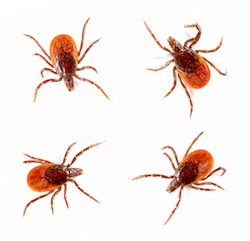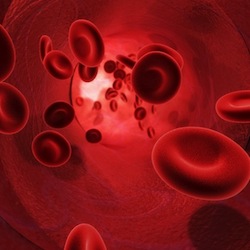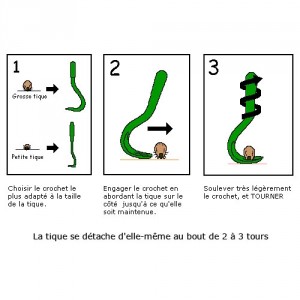Why protect my dog from ticks ?
 Our current way of life, more grants in addition to embracing pets and promote their mobility (travel with their masters). At the same time, the proliferation of wild animal populations and global warming create a favourable environment for ectoparasites.
Our current way of life, more grants in addition to embracing pets and promote their mobility (travel with their masters). At the same time, the proliferation of wild animal populations and global warming create a favourable environment for ectoparasites.
These changes result in an increase in the level of exposure to arthropod parasites, particularly ticks, vectors zoonotic agents (communicable to humans and vice versa).
A RISK NOT NEGLIGIBLE
Ticks are the second source of transmission of pathogens (causative agents of disease) to humans after mosquitoes, and are the primary source of transmission of pathogens to animals. In Europe, ticks have been identified as vectors of at least fifteen diseases of which seven are transmissible to humans.
A RISK THROUGHOUT THE YEAR, EVEN IN WINTER
The normal activity of ticks is amended.
Ticks remain active longer and the risk of infestation are now present throughout the year, even in winter.
A TICK, THAT IS-THIS-THAT IT IS ?
– The tick is a mite of very large. Its lifespan can reach up to four years.
– Ticks spend most of their life outdoors, in wooded areas and fields.
As soon as they can, they attach themselves to a host which they suck blood to feed and survive. It is during these blood meal that they can transmit microorganisms responsible for diseases.
– Ticks are three blood meals throughout their life :
the larva first,
the second to the State of nymph
and the last adult.
Each of these meals can last from two days to two weeks and allows the tick to multiply his weight by 100.
The three main species of ticks from dogs in Europe
– Ixodes ricinus is a very common tick in Europe
She likes cool temperatures, wet and temperate climates.
– Dermacentor reticulatus
Traditionally located in France and Central Europe, It is now widespread in Germany, in Belgium, to the Netherlands, the Denmark and the United Kingdom.
– Rhipicephalus sanguineus
This tick traditionally located in southern Europe, today is also present in certain areas in the North of Europe.
WHAT DISEASES TICKS CAN TRANSMIT A MY DOG ?
Canine diseases transmitted by ticks can cause clinical arrays varied sometimes crude symptoms that can make their diagnosis difficult.
Some of these diseases can evolve very quickly and are sometimes fatal.
– Lyme disease, or borreliosis
It is transmitted by Ixodes ricinus
It is accompanied by fever, a great fatigue and loss of appetite.
Joint disorders are also very frequently encountered :
The animal box, adopt an approach “steep”.
These symptoms disappear sometimes after a few days, until pain step at the level of an another joint .
After several painful episodes, , a chronic PERIARTHRITIS may develop.
Occasionally, vomiting and increased size of lymph nodes may appear.
– Babesiosis
It is transmitted through D. reticulatus, R. sanguineus
Babesiosis causes destruction of red blood cells that causes : high fever, anemia and a lethargic state.
The mucous membranes of the animal, first pale quickly become yellow (onset of jaundice or “jaundice” secondary to the destruction of red blood cells) and the owner may notice a change of colouring of urine that become Brown.
– Ehrlichiosis
Ehrlichiosis is transmitted by the tick R. sanguineus
As for babesiosis, the animal presents, in the acute form, anemia, fever, a major fatigue and anorexia.
These symptoms can be added : enlargement of the lymph nodes, the onset of bleeding disorders and a decrease in the number of blood platelets.
The more chronic form accompanied, initially, and a gradual loss of weight and abatement, What makes diagnosis difficult.
WHAT RISKS TO HUMANS ?
Ticks may be responsible for the transmission of several zoonoses
Zoonoses are diseases or infections from animals to man (either directly, or through a vector (ticks, chips, mosquitoes...)).
HOW PROTECT MY DOG AND ME PROTECT ?
As we mentioned, ticks are capable of transmitting viruses, bacteria and protozoa that can cause serious and sometimes fatal disease.
They can transmit these pathogens after fixing on their host. Once in place, they feed on blood and can cause epidermal infections and transmit these diseases.
In general, ticks need to be attached to their host for at least 24 hours to transmit the microorganisms responsible for diseases. However, This varies depending on the type of pathogen. The virus can be transmitted in a few minutes while the bacteria and protozoa require more time, between 12 and 72 hours.
To avoid transmission of pathogens and the occurrence of serious diseases such as Lyme disease, ehrlichiosis and babesiosis, the most effective way is toprevent the attachment of ticks and / or kill them as quickly as possible.
The best possible prevention against ticks through :
– A careful examination of your pet to the return of the walks.
Remove ticks in the return of outdoor outings, using an instrument adapted (very effective tick hooks exist, consult your veterinarian).
– The regular application of a pest control active against ticks, at least from March to November
This pest control needs :
¤ have a fast action, who kills ticks and less of 24 hours,
¤ cause detachment of ticks already attached (The treatment causes voluntary movements of the parasites to remove their mouthparts of the skin of the host) and prevent the attachment of new ticks (they fail to poking the animal for to soak up blood)
¤ a long protection period (several weeks),
¤ be water resistant.
(Attention, some of these treatments, well tolerated in dogs, may be toxic in cats! Do not hesitate to seek advice from your veterinarian)
– Learn about places to tick risks to avoid these areas.
– Setting up a vaccine protection where possible : your veterinarian can tell you existing canine vaccines against diseases transmitted by ticks (Piroplasmosis, Lyme disease).
§
The fight against infestation by ticks to prevent the transmission of many infectious diseases. It relies on the very regular application of pest control effective for your dog.




